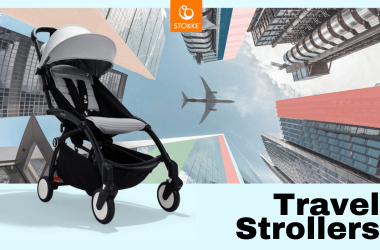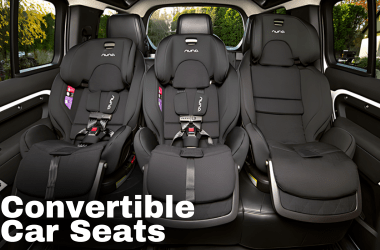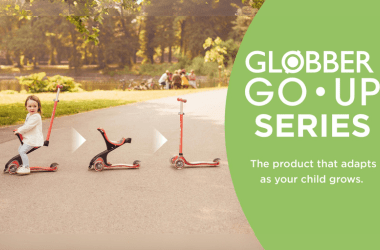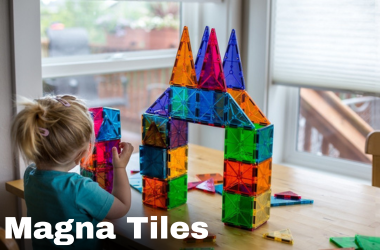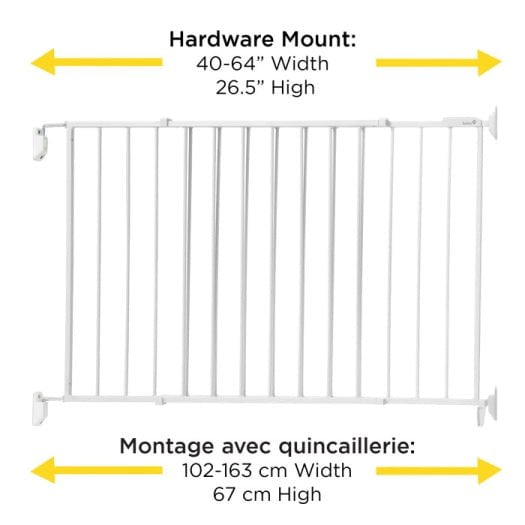Baby Gates 101: Choosing the Safest Gate for Your Home in 2025
One day, your baby is rolling. The next? They're crawling straight for the stairs, the dog bowl, or your perfectly coiled laptop cord. In what feels like the blink of an eye, your cozy home transforms into a wild adventure park, and you're suddenly on constant alert.
That’s when baby gates become not just helpful, but essential.
Whether you’re setting boundaries for safety, sanity, or both, the right gate can give your little explorer the freedom to roam and give you a moment to sip that coffee while it’s still warm. In this guide, we’re walking you through exactly how to choose the safest, most parent-friendly baby gate for your home in 2025.
We’ve stubbed our toes on bottom bars, fought with faulty locks, and finally found what works. Let’s figure it out together!
Why Baby Gates Are a Must in 2025
Babies get curious as time flies. Many babies start crawling by 6 months, and climbing often precedes walking confidently. That makes childproofing less of a “next step” and more of a “now step”.
Baby gates are your first line of defense, helping you keep your baby safely out of harm’s way without having to say “no” 300 times a day. Beyond staircases, baby gates are incredibly useful in high-risk areas like:
-
Kitchens
-
Bathrooms
-
Fireplaces and heaters
-
Home offices with cables and electronics
And in 2025, safety standards continue to evolve. Look for gates that meet certifications like JPMA (Juvenile Products Manufacturers Association) and ASTM, or align with Health Canada guidelines on childproofing.
Above all, gates bring peace of mind because even a few unsupervised seconds can feel like forever when your toddler is on the move.
Types of Baby Gates and Where to Use Them

No two homes (or babies!) are alike. Here’s a breakdown of common baby gate types, when to use them, and what to look out for.
Hardware-Mounted Gates
Best for: Top of stairs, balconies, or other high-risk areas
These screw directly into your wall or banister for a secure, non-shifting barrier. They’re the gold standard for places where safety matters most.
Pros:
-
Very secure once in place.
-
Great for high-risk areas (like stairs or elevated landings)
-
Extremely difficult (near impossible) for kids to dislodge.
Cons:
-
Requires tools and may require drilling into walls or banisters.
-
May be unsuitable for rentals, unless pre-approved.
-
More time-consuming to set up.
We always recommend these when safety is more important than convenience, especially in homes with more than one floor.
Pressure Mount Gates
Best for: Hallways, doorways, and the bottom of stairs
These use tension between two flat surfaces (like walls), making them quick to install and easy to remove.
Pros:
-
No drilling
-
Great for rentals or short-term use.
-
Easy to move around
Cons:
-
Never use at the top of the stairs!
-
You may need to adjust frequently to apply additional pressure.
These are meant for everyday zones, either between two rooms or to block off an area like laundry, or to keep pets in or out of a room.
Extra-Wide or Adjustable Gates
Best for: Open-concept spaces or wide entryways
These extend beyond standard gate widths, often with added panels or modular flexibility. They come with extra panels or expandable sections to cover widths exceeding the average space. Several additional sections even make semi-enclosed play spaces
Pros:
-
Customizable to fit any layout
-
Some versions function as play yards
Cons:
-
Bulkier than standard gates
-
May require additional anchoring
These gates aren't going out of style anytime soon for wide kitchens, living rooms, or family spaces.
Featured Products
Auto-Close or Walk-Through Gates
Best for: High-traffic areas
These open like doors and often include auto-close or stay-open features, perfect for when your hands are full (which is always).
Pros:
-
Simple one-hand operation.
-
Some automatically close or stay open when you need them.
Cons:
-
Mechanisms have the tendency to wear down with heavy use.
-
More expensive than basic entry gates.
Ideal for kitchens, playrooms, or anywhere you find yourself passing through regularly.
Freestanding or Playpen Gates
Best for: Play zones or temporary set-ups
These modular gates can be shaped into enclosures or barriers, and don’t require installation.
Pros:
-
Flexible, portable, and adaptable.
-
Does not require installation.
Cons:
-
It can be tipped or moved by a persistent toddler.
-
Not intended for use on a staircase.
We recommended them for playtime in the living room or at grandparents’ homes, where you may need some flexibility.
Key Features to Consider When Choosing a Gate
Picking a gate is not only a matter of where it goes; it’s also a matter of how it fits into your life.
-
Height and Width: So measure your space (twice!). Some gates have extensions or add-on panels.
-
Lock Mechanism: Look for a gate that is child-proof but not parent-proof. A one-handed open gate is a game-changer.
Materials:
-
Wood: Stylish, but prone to dings
-
Metal: Durable and secure
-
Plastic: Lightweight but less sturdy
-
Open Direction: One direction is ideal for stairs; two-way opens great for doorways.
-
Bottom Bar: A low-profile or bar-free base will help prevent tripping hazards (and that's even if you're a sleep-deprived parent).
-
Certifications: Look for JPMA, ASTM, and Health Canada approvals so you know for sure the gate meets 2025 safety standards.
-
Accessibility: Ensure that older siblings or caregivers can easily manage the gate, or at least that they know how!
We always advocate for safety over convenience, especially when near staircases. You'll never regret taking that extra step to protect your little explorer.
Installation Tips and Common Mistakes to Avoid
Even the best gate won’t work if it’s installed incorrectly. Here are some tried-and-true tips:
-
Always, always follow the manufacturer's instructions.
-
Never, ever use a pressure-mounted gate at the top of stairs. It could move and pose a fall hazard.
-
Check stability regularly; screws will loosen, and pressure will fade over time.
-
If your gate could be misused, you should install it flush to a wall or banister so it cannot wiggle or create an opening.
-
Tell your grandparents, babysitters, and older children how to use it appropriately.
-
Do not stack gates or do it yourself. Construction projects do not hold up to a toddler's curiosity.
FAQs About Baby Gates
When should I set up a baby gate?
You should set up baby gates as soon as your baby starts crawling, usually at around 6 to 9 months.
How long do you have to use a baby gate?
You will want to keep your baby gate in place until your child is around 2 years old or can independently and safely navigate stairs.
Are pressure-mounted gates safe for stairways?
No. Only use hardware-mounted gates at the top of stairways.
Can I use my gate from a previous child?
Yes, but you will want to check for damage, missing pieces, or expiration of the safety certification.
Are baby gates safe for pets, too?
A lot of baby gates are! Just make sure the gate height and spacing are appropriate for the habits and size of your pet.
Safer Spaces, One Gate at a Time

Choosing a baby gate is not about the trends; it's about understanding your space, your child, and your family's routine.
Fortunately, in 2025, there are many safe, modern, and versatile options available. Whether you live in a small apartment or a large, open-concept home, there is a gate to serve your life (and style).
At Little Canadian, we offer a collection of parent-approved baby safety gates, so you can have confidence every step of the way. Check out our Baby Safety Gates Collection!


